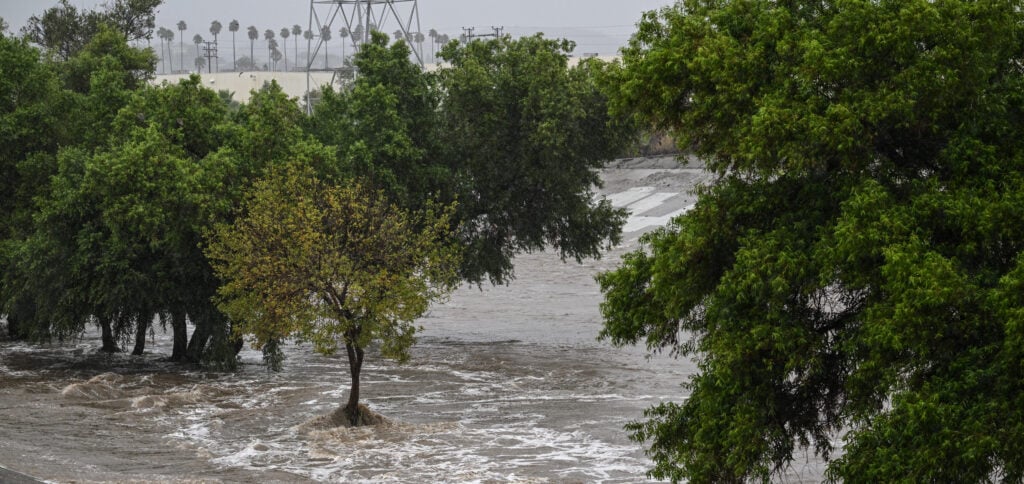California Governor Gavin Newsom had declared a state of emergency in much of this typically dry area, where flash flood warnings remained in effect until Monday morning.
ADVERTISING
The Los Angeles branch of the state-run National Weather Service reported overnight on Sunday that several daily rainfall records had been surpassed in the region.
The population was already tense before the storm arrived, when a 5,1 magnitude earthquake shook the city of Ojai, in southern California, although no damage or casualties have been reported so far.
The rains flooded several highways, turning them into rivers and blocking some drivers.
ADVERTISING
The start of the school year in public education was postponed by one day, with classes canceled in San Diego, Los Angeles, Pasadena and Palmdale.
Hilary, which at its peak was a Category 4 hurricane – the second most powerful on the five-level Saffir-Simpson scale – downgraded to a tropical storm as it passed from Mexico to the United States and then became a cyclone post- tropical.
On Monday morning, Hilary's nucleus was located in Nevada, where it was expected to move quickly. The rains also extended to the states of Oregon and Idaho, according to the latest report from the National Hurricane Center (NHC) in the United States.
ADVERTISING
“Locally catastrophic and potentially deadly flooding” was still expected in parts of the southwestern United States, it added.
The storm is moving at a fast pace of 55 kilometers per hour, with some stronger gusts.
Incidence of climate change
The local ABC affiliate aired images of intense flooding in parts of Palm Springs, where the police department announced the outage of the 911 emergency line on Sunday night.
ADVERTISING
The beaches were closed and stores were crowded with residents stocking up on water and essential products. Warnings for flash floods and even tornadoes have been issued in some regions.
Although the intensity of the storm has reduced, Deanne Criswell, manager of the Federal Emergency Management Agency (FEMA), warned that it will pose “a serious impact and threat to Southern California”.
Five shelters were made available and more than 7.500 people were mobilized, including hundreds of National Guard soldiers and rescue teams, according to the California governor's office.
ADVERTISING
In San Diego, residents filled bags with sand for possible flooding, while rescuers warned people to stay away from the sea.
Further south, in neighboring Mexico, one person died after a vehicle was swept away by a flooded river, according to Mexico's Civil Defense, which warned of landslides and road closures in the state of Baja California.
The Mexican Army provided 35 shelters for 1.725 people affected by the storm.
Scientists have warned that storms are becoming more intense as global warming occurs due to climate change.
“We also need to look at how these severe weather events impact climate change,” Criswell told CNN on Sunday.
“What will be the risk in the future?”
Read also
* The text of this article was partially generated by artificial intelligence tools, state-of-the-art language models that assist in the preparation, review, translation and summarization of texts. Text entries were created by the Curto News and responses from AI tools were used to improve the final content.
It is important to highlight that AI tools are just tools, and the final responsibility for the published content lies with the Curto News. By using these tools responsibly and ethically, our objective is to expand communication possibilities and democratize access to quality information. 🤖




